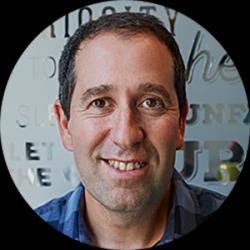We’ve written about Agile methodology in our dev process before and we’ve also written about design thinking (or, as some call it, product thinking). But we’ve never answered the question, “which is better?”.
As it turns out, that’s the wrong question to ask. They’re not the same, and each applies to a different phase of the development process.
Product Thinking/Design Thinking
Product/design thinking is a non-linear thought process that that begins the task of developing a product by defining the problem the product is going to solve for users. From square one, the team thinks in terms of a user’s problems or the jobs they need to get done, or their goals. Features typically come last in the product development chain of events.
That is pretty much the traditional thought process turned on end. Traditional companies don’t typically put the customer needs first. They design products and then market the features of those products with no real attention paid up front to serving the needs of their end users.
Do Features Matter in Design Thinking?
In design thinking, features matter but mainly during the final stages of development. Their very existence hinges upon the product itself, as if they were mere accessories. You can still have a product if a certain feature is missing but the reverse is not true: you won’t have much of a product if all you have is a feature or two.
The idea here is that, in design/product thinking, it’s important not to get hung up on features. If the product team starts by uncovering the problem this end user must solve, they frame their project in a way that allows for creativity and innovation.
Focusing on features is why some teams end up designing products that nobody wants. It’s actually better to develop features after the product has gone to market! And that’s where Agile methodology comes in…
Agile Methodology
Agile is a complement to design thinking. If design thinking is a type of brainstorming, then Agile is a way to get the product out to market as fast as you possibly can. The fundamental principle of Agile is iteration. Create a product that’s “good enough”, which you think will satisfy customer need/solve customer problems. Don’t worry about features because they can be tweaked, added, or removed based on feedback from each iteration.
In fact, in Agile thinking, you’re never really quite finished with a product because there’s always room for improvement. This is also how products stay relevant in a competitive, fast-moving market.
Design Thinking and Agile, Woven Into Our Dev Process
Design Thinking and Agile are often confused and we’re not the first to try and clarify the blurred line that exists between them. A pioneer of Design Thinking, a founder of IDEO, was asked this question. His answer? Agile is “perpetual beta” and Design Thinking is synonymous with Human-Centered Design.
But the real point we want to make here is that for us, it’s essential that we combine these two methodologies. They’re woven into the various phases of the Making Sense Product Development Process. Our Discovery Phase is where much of the design/product thinking takes place, for example.
So no, the two aren’t the same. But there is some crossover. They both rely on outside input from the end user, whether it’s research, business needs, feedback, or success metrics. Both call upon diverse teams to optimize the value they produce, seeking the type of innovative thinking that really had no venue in the traditional product development process of half a century ago.
Here at Making Sense, we’re proud to be part of the 21st century and the innovative culture that drives it. It’s an exciting time to be a developer and we’re always excited to share what we know. Stay tuned for more, see you next week.
